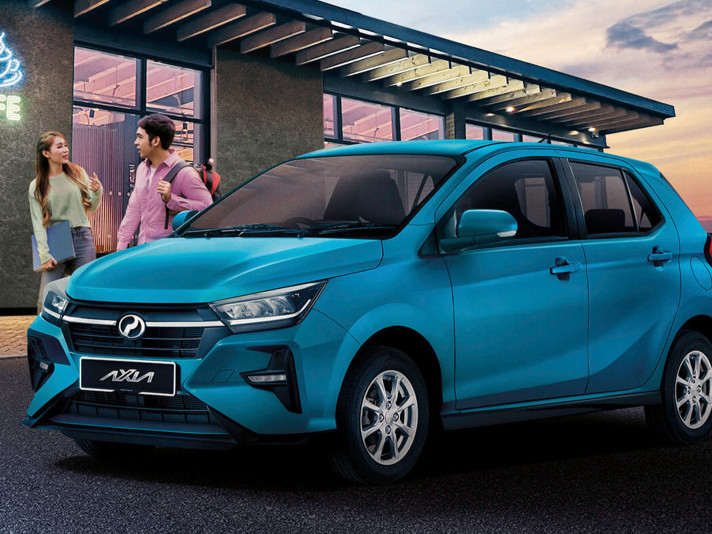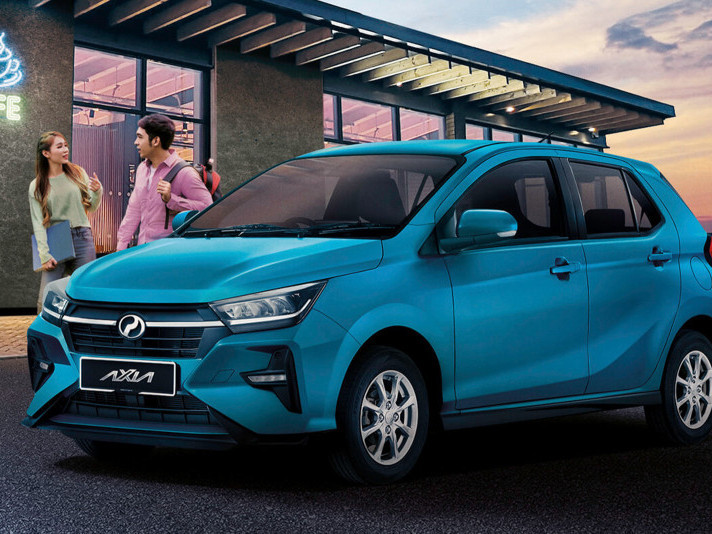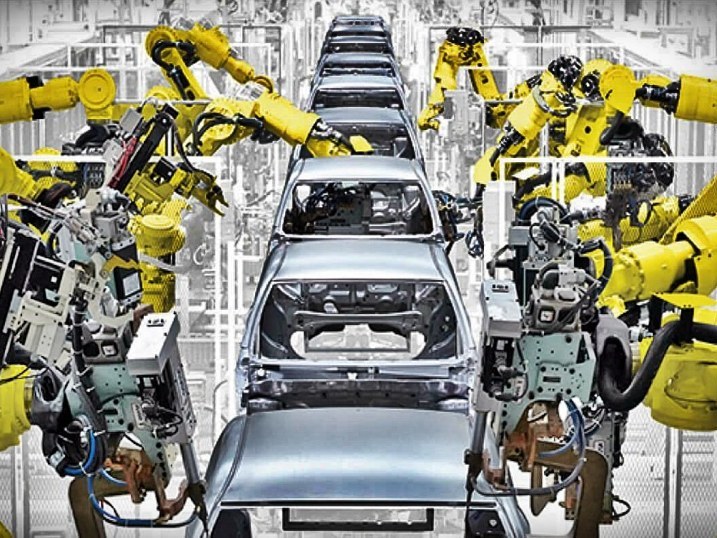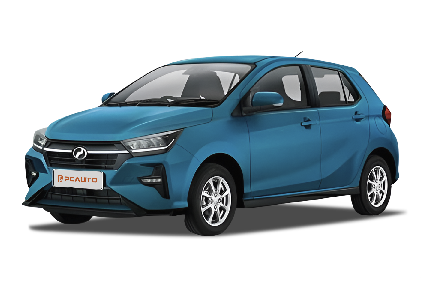Q
how to connect bluetooth to perodua axia
The Perodua Nexis, the highly anticipated all-new SUV in Malaysia, hasn't had its boot capacity officially revealed just yet. But looking at common setups in the B-segment SUV class, we're expecting a practical 280 to 350 liters. That should easily swallow 2-3 standard suitcases, perfect for family grocery runs or short getaways.
It's worth noting that boot volumes are usually measured using the VDA standard, which gives two figures: the standard capacity and the maximum with the rear seats folded down. SUVs like the Nexis typically offer flexible seating – think a 60:40 split-folding rear bench – to really open up that cargo space when you need it.
For Malaysian buyers who value practicality, beyond just the headline volume numbers, keep an eye on details like the boot opening width and the load lip height. These little things make a big difference in day-to-day use. If you're keen, the best move is to check out the actual car once it's launched – head down to your nearest Perodua showroom, test the space for yourself, and then pick the spec that fits your needs best.
Special Disclaimer: This content is published by users and does not represent the views or position of PCauto.
Related Q&A
Q
What is Axia tyre size?
The tire sizes for the Perodua Axia vary depending on the specific trim level and model year. The most common spec you'll come across is 165/55 R14 – that's the standard fitment for most Axia variants, perfect for zipping around the city and saving on fuel costs.
If you step up to some of the higher - end trims, you might find 175/65 R14 tires instead. These tires offer a bit more grip and stability, especially when cornering or at higher speeds.
But picking tires isn't just about the numbers. You've got to pay attention to the tread pattern and rubber compound too. For daily commuters who mostly stick to city streets, a good all - season economy tire should be a good choice. On the other hand, if you're regularly hitting the highway for longer hauls, a touring or slightly higher - performance tire might be a better bet for that extra peace of mind.
Malaysia's weather is quite changeable, with sudden downpours. It's smart to choose tires with good water dispersion, such as those with deep grooves and a tread design that helps quickly channel water away, reducing the risk of hydroplaning on slick roads during the monsoon season.
Also, don't forget the basics: keeping an eye on your tire pressure and checking tread wear regularly. It's not just about making your tires last longer – it's a crucial safety thing too. Under - inflated or worn - out tires can cause problems, especially in the wet conditions mentioned above.
Thinking of upsizing your tires for a better look or performance? Just make sure whatever new size you choose is compatible with the Axia's stock setup. You don't want to throw off your speedometer accuracy or put extra strain on the suspension components. When in doubt, follow the manufacturer's recommendations – they know what works best for the car.
Q
What is the top speed of Axia?
The Perodua Axia, a top pick among Malaysia's entry-level economy cars, maxes out at around 155 to 165 km/h. Your actual top speed might vary a bit depending on the model year and specs. Take the 2023 1.0L DVVT engine version, for example – it's smoother and more fuel-efficient, but when it comes to flat-out speed, it's pretty much on par with the earlier models.
Under the hood, you've got a 1.0L three-cylinder engine, and let's be real, this little guy's designed first and foremost for zipping around the city. That said, it still holds its own on the highway with steady power delivery. Just keep in mind, it's a lightweight car, so you'll definitely notice more wind noise when you're pushing those higher speeds. For safety and to keep that fuel gauge happy, sticking to a reasonable pace is the way to go.
For Malaysian buyers, the Axia's main draws are its wallet-friendly price tag, low maintenance costs, and impressive fuel economy – we're talking about an official 21km/L. It's perfect for daily runabouts. Now, if you're craving a bit more zip, you might want to check out rivals like the Proton Saga. Its 1.3L engine gives slightly stronger acceleration. But here's the thing: the Axia still has the edge when it comes to resale value and the backing of a solid brand service network.
Q
What kind of car is Axia?
The Perodua Axia stands as one of Malaysia's most beloved entry-level economy cars. Launched back in 2014 by homegrown brand Perodua, it's all about delivering stellar fuel efficiency and a wallet-friendly price tag, making it a top pick for zipping around the city or handling daily family duties. Under the hood, you'll find a 1.0-liter three-cylinder engine, paired with your choice of manual or automatic transmission. It's a fuel sipper too – official figures peg it at around 21km/L. The 2023 refresh upped the ante with the Advanced Safety Assist (ASA) 3.0 system, throwing in handy features like automatic emergency braking and lane departure warning to boost safety credentials.
What makes the Axia a hit with Malaysians? Start with that approachable starting price, hovering around RM38,600, plus low maintenance costs. Its compact dimensions – a tidy 3.7 meters in length – are perfectly suited to tight city streets and those all-too-common cramped parking spots. It's worth noting that the Axia shares its platform with the Toyota Agya and Daihatsu Ayla, so it inherits that solid Japanese reliability we all know. Perodua sweetens the deal further with a five-year warranty, giving owners extra peace of mind.
For Malaysian shoppers on a budget who still want the thrill of a new car – think fresh graduates or small families – the Axia is a seriously practical choice. Factor in the super low annual road tax (just RM20!) and its potential for some fun modifications, and it's easy to see why the Axia keeps rolling off dealer lots.
Q
What size engine is the Axia?
The Perodua Axia is powered by a 1.0-liter three-cylinder naturally aspirated engine, codenamed 1KR-VE. This mill features a DOHC (Double Overhead Camshaft) setup, churning out a maximum of 67PS at 6,000rpm and 91Nm of torque at 4,400rpm. It's also equipped with Dual VVT-i (Variable Valve Timing with intelligence) technology, which plays a big part in its impressive fuel efficiency – Perodua claims it can hit 22km per liter. That makes it a really solid choice for zipping around Malaysian cities.
As Perodua's entry-level offering, the Axia's engine might not be the biggest in displacement, but don't let that fool you. Thanks to the car's lightweight design and some smart powertrain tuning, it's more than up to the task of daily driving. This is especially true in Malaysia's often congested traffic, where a smaller engine actually shines – it sips less fuel and puts out fewer emissions, which is a win-win.
Another thing worth noting is that this 1KR-VE engine isn't unique to the Axia; it also powers other Perodua models like the Myvi 1.0 variant. That means it's a tried-and-tested unit with a reputation for reliability. On top of that, maintenance and repair costs are generally quite reasonable. All in all, it makes the Axia a very compelling option for Malaysian buyers who are keeping a close eye on their budget.
Q
Is Axia 3 cylinder?
Right, the Perodua Axia comes with a 1.0-liter three-cylinder engine, and this little powerplant is all about fuel efficiency and a compact design – perfect for city driving. Especially here in Malaysia, it delivers decent performance while keeping fuel consumption low, which is a big plus in our traffic. Compared to a traditional four-cylinder, losing one cylinder makes the three-pot simpler, lighter, and that helps trim overall vehicle weight and boost fuel economy. Now, sure, three-cylinders can sometimes have a bit more vibration, but modern tech like balance shafts has really ironed that out these days. For Malaysian buyers watching their budget and wanting something economical for daily commuting, the Axia's three-cylinder is a solid, practical pick. It checks all the boxes for local emissions standards and keeps running costs down, even in stop-and-go jams. If you're worried about how smooth it is, though, I'd definitely suggest a test drive first. After all, how a car feels is pretty personal.
Q
What is the new Axia 2019?
Launched back in 2019, the Perodua Axia remains one of Malaysia's go-to choices for an affordable entry-level A-segment car. It's all about being easy on the wallet and packing solid value, making it a top pick for zipping around the city or running family errands.
Visually, it got some nips and tucks to keep things fresh – think a more modern front grille and LED daytime running lights that give it a younger, sharper look. Step inside, and the 2019 Axia upped its game with an upgraded sound system and comfier seat materials. Higher-spec trims even throw in a multifunction steering wheel and touchscreen infotainment, making those drives a bit more enjoyable.
Under the hood, you're looking at a 1.0L three-cylinder engine paired with either a 4-speed auto or 5-speed manual. The real star here? Fuel efficiency. It's a champ at sipping petrol, which is exactly what Malaysian buyers want when it comes to keeping running costs low.
Safety-wise, all Axias come standard with dual airbags, ABS, and EBD. Some models take it up a notch with Vehicle Stability Control (VSC) and Traction Control (TRC), adding that extra peace of mind on the road.
As Perodua's hometown hero, the 2019 Axia stays true to the series' roots of practicality and dependability, while those little upgrades here and there cater to folks wanting a bit more quality. If you're a Malaysian shopper on a budget but still want something that's fuel-efficient, easy to drive, and cheap to maintain, the 2019 Axia is definitely one to check out.
Q
What Segment is Perodua Axia?
The Perodua Axia belongs to the A-Segment vehicles in the Malaysian market, which is the most entry-level microcar category. It mainly targets consumers with limited budgets who prioritize fuel economy. Its body size is compact (about 3,640mm in total length and a wheelbase of 2,450mm). It is equipped with a 1.0L three-cylinder engine and paired with a D-CVT gearbox, highlighting the flexibility for urban commuting and the advantage of low cost. The official fuel consumption data shows that it can travel about 22 kilometers per liter of gasoline, meeting the needs of Malaysian consumers for economical and practical small cars.
In terms of extended knowledge, Malaysia's automobile classification standards usually refer to the European system. Besides the Axia, A-Segment models also include the Proton Saga and other vehicles. These cars are characterized by their affordable prices (the starting price of the Axia is around RM22,000 to RM49,000) and are suitable for narrow road environments. However, their safety configurations have been significantly improved in recent years. For example, all models of the 2023 new Axia come standard with ABS + EBD and dual airbags, and the top - end version is even equipped with the ASA 3.0 advanced safety assistance system, indicating that entry - level car models are gradually upgrading their technological equipment. Consumers can choose different configuration versions according to their budgets. At the same time, it is recommended to test - drive and compare the Proton Iriz in the same class or second - hand B - Segment models before purchasing a car to comprehensively evaluate the balance between space and functionality.
Q
What is the Reslae Value of Perodua Axia?
As one of the best-selling entry-level models in Malaysia, the Perodua Axia shows relatively stable resale value in the used car market. This is mainly due to advantages such as the high vehicle ownership of the brand, low maintenance costs, and good fuel economy. Depending on factors like vehicle age, mileage, vehicle condition, and configuration, Axias that are one to three years old usually retain 60% to 75% of their original price, while those that are five years old are around 40% to 50%. The specific price also needs to refer to market supply and demand and maintenance records. In addition, the durability of the Axia and its extensive service network also support its resale value.
For consumers considering buying a used Axia, it is recommended to give priority to models with complete original factory maintenance records to ensure the vehicle condition. At the same time, pay attention to the configuration differences of minor facelifts in different years. For example, models after 2022 have upgraded safety features, and such updates may have a positive impact on the resale price. In the Malaysian used car market, economical small cars like the Axia usually have a fast turnover rate and are a practical choice for car buyers with limited budgets.
Q
How Many CC is Perodua Axia?
The Perodua Axia is one of the most popular entry - level compact cars in Malaysia. The engine displacement varies across different versions. Currently, the latest model of the Axia is equipped with a 1.0 - liter three - cylinder naturally aspirated engine, with a specific displacement of 998cc. This is a common engine configuration for compact economy cars. This engine emphasizes fuel efficiency and is highly suitable for city commuting and daily use.
For Malaysian consumers, the low displacement of the Axia not only means lower fuel consumption and road tax but also meets the domestic demand for economical and practical vehicles. It's worth noting that engine displacement (CC) doesn't directly determine a vehicle's power performance. Other factors such as horsepower, torque, and gearbox tuning also need to be comprehensively considered. Although the Axia has a relatively small displacement, its lightweight body design and optimized transmission system ensure sufficient power for daily driving.
Moreover, the Malaysian market is quite sensitive to the displacement of compact cars. Therefore, engines around 1.0 liters are very common locally. They can balance performance and cost and are also suitable for the local road conditions and fuel price environment.
Q
What is the Engine in Perodua Axia?
The Perodua Axia is a highly popular economy car in the Malaysian market. It is equipped with a 1.0-liter three-cylinder naturally aspirated engine, model number 1KR-DE. This engine was jointly developed by Perodua and Toyota of Japan. It adopts the double overhead camshaft (DOHC) and variable valve timing (VVT-i) technologies. The maximum power is 67 horsepower and the maximum torque is 91 Nm. It is paired with a 4-speed automatic transmission or a 5-speed manual transmission. The overall performance is smooth and it boasts excellent fuel economy, making it very suitable for urban commuting.
The design of this engine focuses on low fuel consumption and low emissions, meeting the environmental protection requirements of the Malaysian market. At the same time, it also reduces the daily usage cost for car owners. For readers who want to learn more about automotive knowledge, although three-cylinder engines may be slightly inferior to four-cylinder engines in terms of smoothness, their lightweight and high - efficiency features make them very popular in small - displacement models. The addition of VVT - i technology further optimizes power output and fuel efficiency, which are common technological trends in modern small - displacement engines.
Popular Cars
Model Year
Car Compare
Car Photo
Latest Q&A
Q
What is the capacity of a 2 litre engine?
A 2-liter engine refers to a total displacement of 2000 cubic centimeters (cc) across all cylinders—that's 2.0 liters. This number represents the combined volume swept by the pistons moving from top to bottom dead center in each cylinder. Displacement is one of the key indicators of an engine's power output—generally, a larger displacement means more horsepower and torque, though often at the cost of higher fuel consumption.
In everyday driving, 2.0-liter engines strike a solid balance between performance and efficiency, which is why they’re commonly found in everything from compact sedans and SUVs to sportier models. That said, real-world performance isn’t just about displacement. Tech like turbocharging, direct fuel injection, or hybrid systems can make engines of the same size behave very differently.
These days, advancements in forced induction mean smaller turbocharged engines can deliver power comparable to—or even surpassing—older, bigger naturally aspirated engines while sipping less fuel. It’s no surprise that more automakers are heading in this direction.
Q
Is 2000cc the same as 2 litres?
Yes, 2000cc and 2 liters refer to exactly the same engine displacement. "cc" stands for cubic centimeter, and since 1 liter equals 1000 cubic centimeters, 2000cc is simply 2 liters – just different ways of saying the same thing.
In the automotive world, engine size is typically labeled in either liters (L) or cubic centimeters (cc). You'll see things like 1.5L or 1500cc, 1.8L or 1800cc – all describing the total cylinder volume. Generally, a larger displacement means more power, though often at the cost of higher fuel consumption.
That said, while displacement is a key spec, it doesn’t tell the whole story. Factors like turbocharging, cylinder count, and fuel injection systems also play a huge role in performance. So you can’t judge an engine purely by its size.
Also worth noting: different markets have their own preferences – some regions lean toward liters, others use cc more often. But at the end of the day, they’re measuring the exact same thing.
Q
Is a 1.5 litre engine 1500cc?
Yes, a 1.5-liter engine is indeed 1500cc. Both "liter" and "cc" (cubic centimeters) are units used to measure engine displacement. Since 1 liter equals 1000cc, 1.5 liters naturally translates to 1500cc.
Engine displacement refers to the total volume of air and fuel mixture an engine's cylinders can draw in during one complete cycle. It’s a key indicator of an engine’s size and power potential—generally, the larger the displacement, the more power it can produce, though often at the cost of higher fuel consumption.
That said, modern engine tech has come a long way. Many small-displacement turbocharged engines now deliver power outputs close to—or even surpassing—larger naturally aspirated engines, all while maintaining better fuel efficiency. That’s why we’re seeing so many cars today adopting 1.5L turbocharged engines as the sweet spot.
Of course, displacement isn’t the only factor to consider. Fuel type, cylinder arrangement, compression ratio, and other engineering choices all play a role in how an engine actually performs in the real world.
Q
Why is engine capacity measured in litres?
Engine displacement is measured in liters because it's intuitive and universally recognized. As a unit of volume, liters directly represent the total working capacity of all cylinders, making it easier for consumers to compare the power potential of different models—for instance, a 1.5L engine typically delivers more power but higher fuel consumption than a 1.0L.
This standardized approach traces back to early European automotive engineering, where engineers used total piston displacement (swept volume) to gauge performance potential. The metric system, with liters, simplified calculations and cross-comparisons.
That said, modern turbocharging has complicated the link between displacement and power. A 1.4T engine, for example, might outperform a traditional 2.0L naturally aspirated unit. So when car shopping, it’s wise to also check peak horsepower and torque figures.
On a practical note, displacement still affects road tax and insurance costs in many used-car markets, though real-world fuel efficiency hinges more on driving habits and engine tech.
Q
What is the formula for engine capacity PDF?
The formula for calculating engine capacity is: displacement (cc)=π/4 x cylinder diameter ² x piston stroke x number of cylinders, where π/4 can be simplified to 0.785, cylinder diameter and piston stroke are usually measured in millimeters (mm), and the final result is expressed in cubic centimeters (cc) or liters (L). For example, a 4-cylinder engine with a single cylinder diameter of 80mm and a piston stroke of 90mm has a displacement of 0.785 × 80 ² × 90 × 4 ≈ 1809cc or 1.8L. Displacement directly affects the engine's power output and fuel efficiency. Generally, the larger the displacement, the higher the horsepower, but fuel consumption also increases relatively. However, modern turbocharging technology can allow small displacement engines to output power close to that of large displacement engines while also considering fuel economy. When choosing engine displacement, daily usage scenarios should be considered. Small displacement engines below 1.5L are suitable for urban commuting, while engines above 1.8L can be considered for frequent long-distance driving or heavy loads. In addition, the displacement is also linked to road taxes, and common models in the local market are mostly concentrated between 1.3L and 2.5L to balance performance and vehicle costs.
View MoreRelated News

Perodua Axia Hits 790,000 Sales: What Makes It So Popular?
AshleyAug 12, 2025

How Much is the Perodua Axia and How to Get the Best Price for Your Desired Model
WilliamMar 25, 2025

Perodua Axia’s Monthly Payments and Loan Calculation in Malaysia
WilliamMar 21, 2025

Is Perodua CKD or CBU? How to know if my car is CKD or CBU?
Kevin WongMar 4, 2025

Spend the least money, buy the most suitable car: New car or used car, which one to choose?
RobertAug 28, 2024
View More

















Pros
Cons